In late October, with leaves turning, Halloween around the corner and crowds in public places reduced by Covid-era restrictions, I paid a return visit to Old Sturbridge Village, the living history museum in Massachusetts.

I've visited OSV many times, first as a child in the 1950s, and then w Iith my children as they grew up. But this time was different. With perfect October weather and sparse attendance, it was easier than ever to feel I had walked down the road not only to another place but to another time.
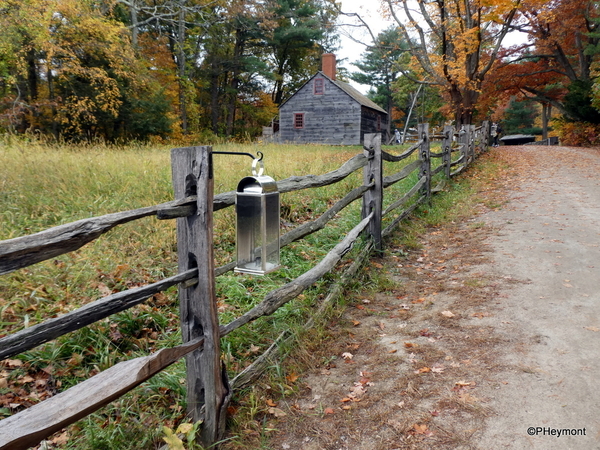
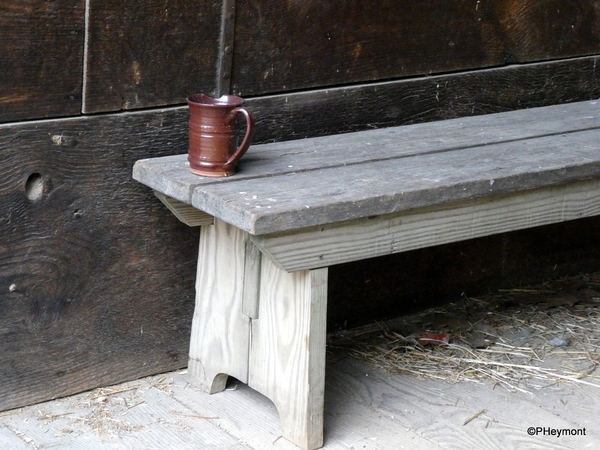
And that's an impression OSV works hard to create, with meticulously staged historic buildings assembled at the village, costumed interpreters playing a variety of roles and plying crafts—all of them ready to converse with visitors on almost anything about the village period, the 1830s.
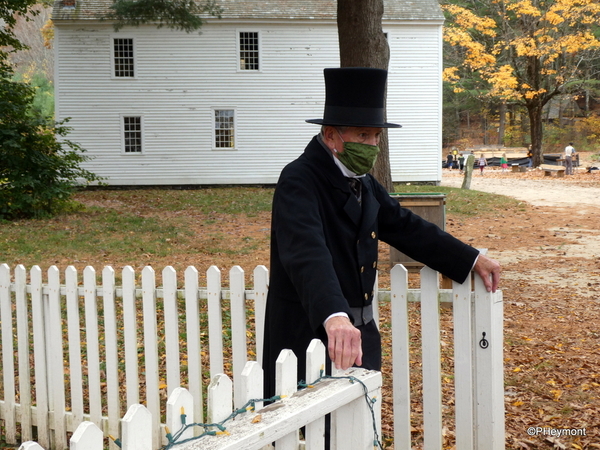
But even so, the impression is hard to sustain when business is good, and hundreds of families, school groups and more, in 21st century clothes, are in your view almost no matter which way you turn. In a way, it's like Venice, where a small population is visited by overwhelming numbers of guests, only at OSV, the visitors are not from a different country but from a different century.
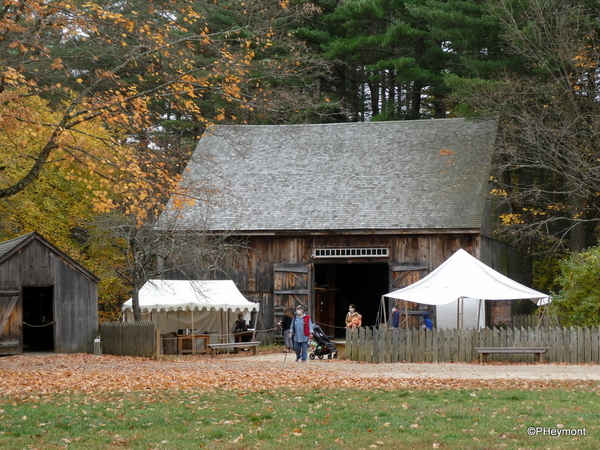

Old Sturbridge Village grew out of an interest, a nostalgia, almost a mania for the early growing years of the U.S. on the part of three members of the Wells family of nearby Southbridge. Their father founded a business in the 1840s that became American Optical; his sons focused on the fifty years before that as they started collect antiques, clocks and furniture.


At Sturbridge, most of the animals are heritage breeds or the result of careful back-breeding to allow study of the economics and practices of the time.
Within a few years, they had accumulated 45 rooms worth of everything, all in their homes. In 1935, they created a museum board to take it and display it. The trustees came up with the idea of displaying it all in situ in a reproduction village. A location was quickly found: a historic farm in Sturbridge, where David Wight had dug a millpond in 1795 and operated mills and a farm.
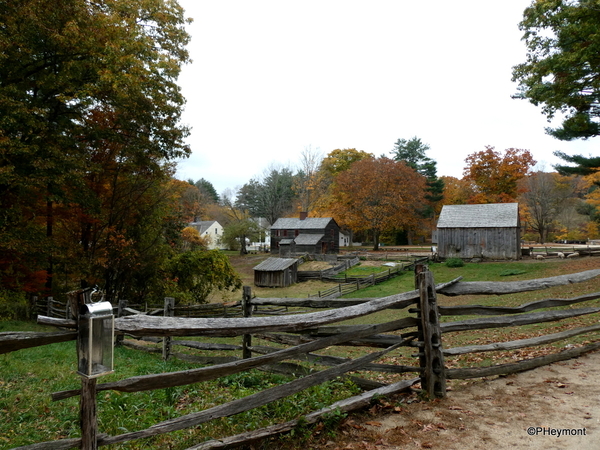
By 1946, the museum opened, but with far fewer buildings. Over the years, more have been moved to the village and become part of the interpretation, and even now new exhibits are being developed.

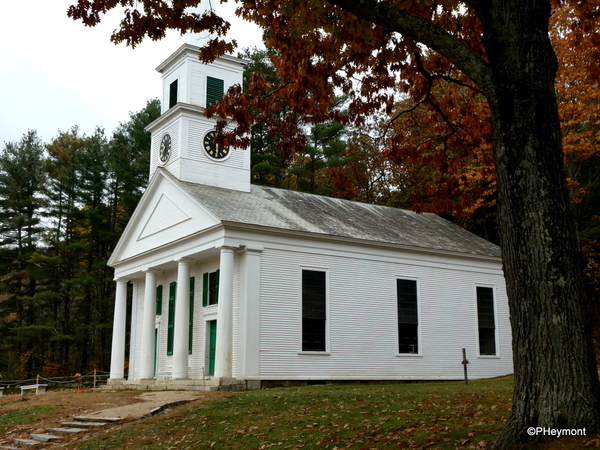
Religion is represented by a Quaker meeting house and a Congregational church, the dominant denominations in the area in earlier times.
There are really four main parts to Old Sturbridge: the Center Village, with stores, workshops, homes, houses of worship, even a tavern (which is also the main public food place in the village). Then there's the 'Countryside,' which includes not only a working farm but also a blacksmith's shop, pottery, a rural school and more, Last, in the historic area, are three working mills using David Wight's original mill race. Near the Visitor Center, there is an area of buildings housing collections of glass, lighting and other work.
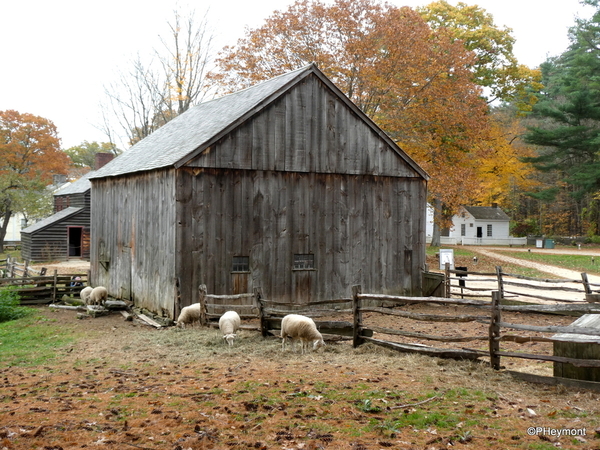
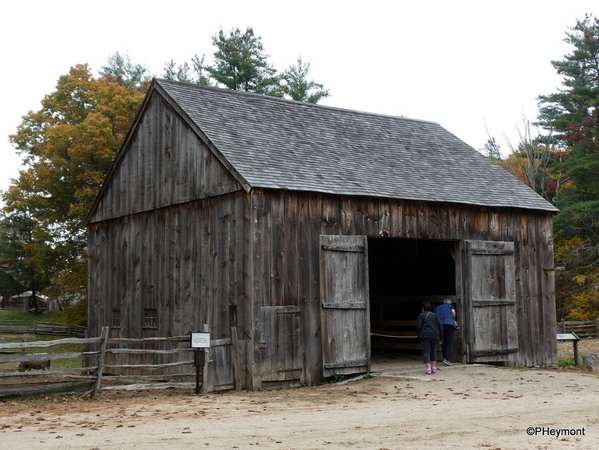
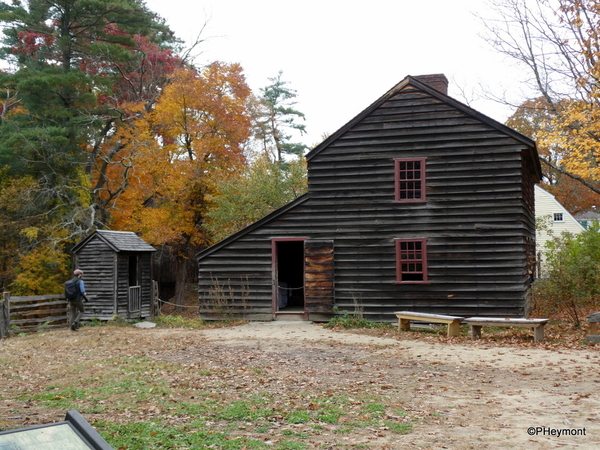 Over the years, OSV shifted its time focus; in earlier years it tried to span the whole period of 1790 to 1840; while the earlier period is reflected in the 'memory' of the interpreters of how things had changed by the 1830s. The focus on the 1830s is no accident: it seems a crossroads in our history.
Over the years, OSV shifted its time focus; in earlier years it tried to span the whole period of 1790 to 1840; while the earlier period is reflected in the 'memory' of the interpreters of how things had changed by the 1830s. The focus on the 1830s is no accident: it seems a crossroads in our history.

Salem Towne, an important historic figure in the area, lived in this mansion when it was in Charlton, the next town over from Sturbridge.
That idea is reflected in signs near the entrance that point out that it was a time of social and technological change; the Revolution was fifty years in the past, and the Civil War thirty years in the future—but slavery and Abolition were issues of the day. Rural New England areas were more connected to the world by canals and railroads. Most New Englanders of the time were of English descent, but there were still many Native Americans, some African-Americans and the beginning of a wave of Irish immigration. Altogether, a time of change.

Like nearly all the buildings, the bank is 'not from here.' It came from Thompson, Connecticut; the covered bridge served Dummerston, Vermont, the blacksmith's shop came from Barre, Vermont. Many other places are here, too!
We'll return at another time to take a closer look at the lives and crafts practiced in the Village; for the moment many of the working parts and indoor exhibits are closed to the public, or have moved outside. In the meantime, I hope you'll enjoy our walk through the Village and through the past.
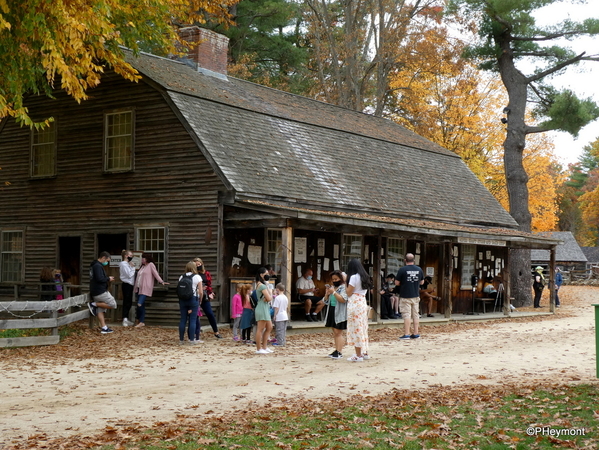

The Miner Grant store represents a crossroads general store and coach stop on the outside, with notices posted; inside it sells candy and souvenirs. Across the common, another general store represents what such a store would actually have sold.



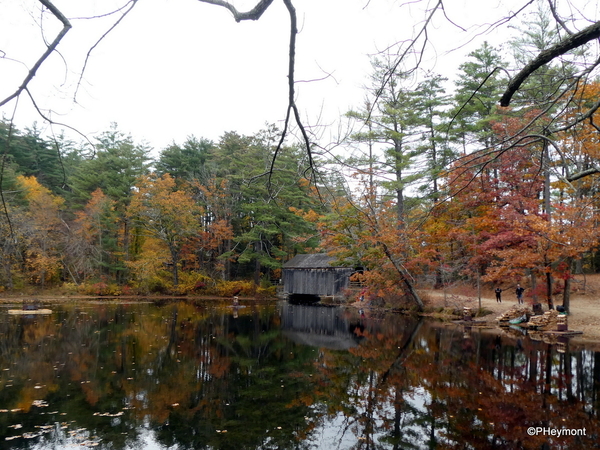 A walk away from the common, through the bridge takes you to the mills, all of which would have been operated by farmers for extra income. Sturbridge has grain and carding mills from the period, and built a sawmill a few years ago.
A walk away from the common, through the bridge takes you to the mills, all of which would have been operated by farmers for extra income. Sturbridge has grain and carding mills from the period, and built a sawmill a few years ago.
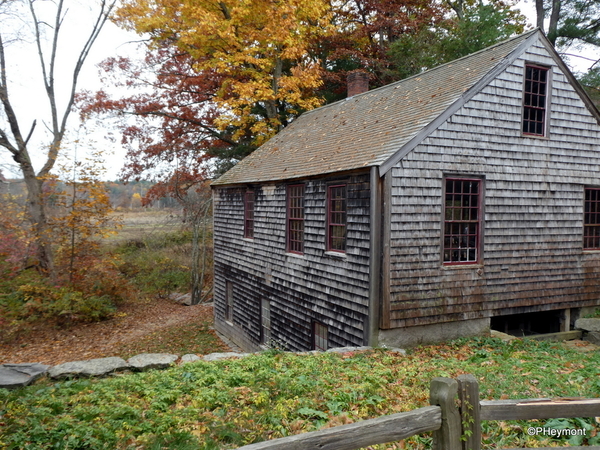

The odd item at left in the lower picture is a floating lantern, a metal container filled with firewood. It was part of the Village's Halloween program this year.


The blacksmith's shop always attracts an audience—noise, heat, flames and seeing objects take shape is a winner. The white house at right is interpreted as his home, and also demonstrates home crafts of the period.
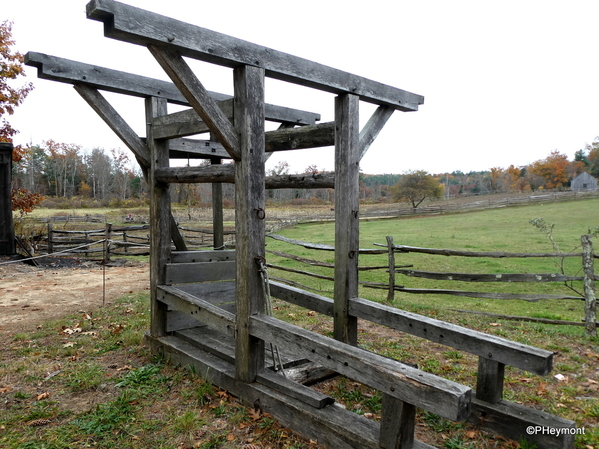 Less frequently on view is another aspect of the blacksmith's work: Many in the era were also farriers, shoeing horses and oxen with iron shoes they made. This contraption is a 'horse crush,' a frame that holds the animal steady while the farrier works safely on the hoof. As this week's One-Clue Mystery, it was recognized by George G.
Less frequently on view is another aspect of the blacksmith's work: Many in the era were also farriers, shoeing horses and oxen with iron shoes they made. This contraption is a 'horse crush,' a frame that holds the animal steady while the farrier works safely on the hoof. As this week's One-Clue Mystery, it was recognized by George G.


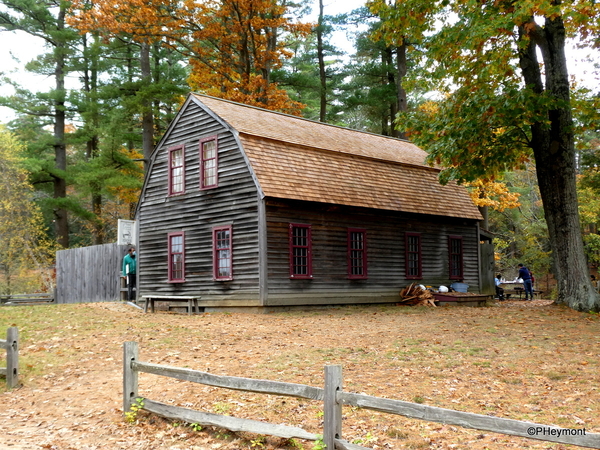 Nearby is a working farm, providing food for Village programs, researching period agriculture, and demonstrating for visitors. The building above is a Sturbridge trivia question: it is a reproduction originally built to be the farmhouse; then the original became available because of a road-widening project. And, OSV has a third version of this building in its 'backstage' area.
Nearby is a working farm, providing food for Village programs, researching period agriculture, and demonstrating for visitors. The building above is a Sturbridge trivia question: it is a reproduction originally built to be the farmhouse; then the original became available because of a road-widening project. And, OSV has a third version of this building in its 'backstage' area.
PRACTICAL
During the pandemic, hours and dates vary, especially during the winter which has short schedules even in normal times. Check their website when planning, especially since for now, timed reservations are required.
Old Sturbridge Village is located where I-84 crosses the Massachusetts Turnpike. There's limited regular bus service from Boston, but there are also many tours available from various vendors.
Plan on at least half a day (at $28 adults and $14 for children 3 and up or college students it's not a drop-in-for-an-hour place); there are several eating options in the Village and visitor center, and you can easily fill a whole day.



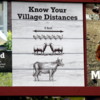



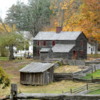






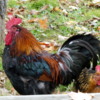


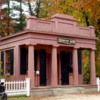

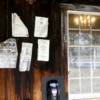



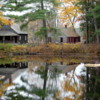










Comments (2)